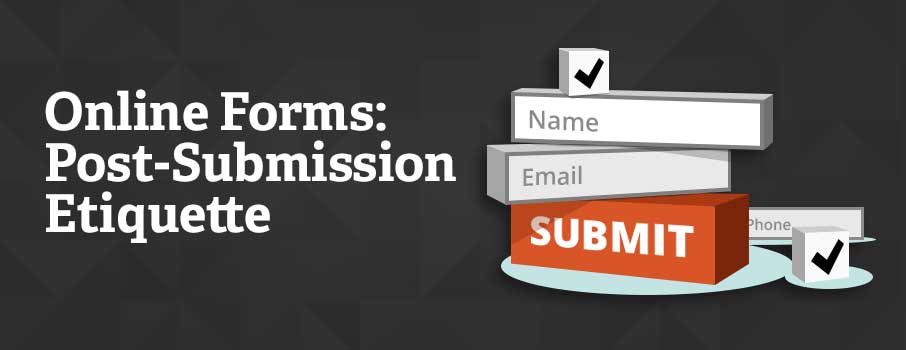Imagine if every time your business missed a call, you didn’t follow up on the voicemail that was left. It could be a message from a business partner, vendor, or worse – a potential customer. What kind of damage would that do to your business?
It’s the same with your online forms. Every form submission is an opportunity to grow your business – so it’s important that you’re doing everything you can to take advantage.
The danger of doing nothing
UX designer Matt Wallens wrote about three outcomes he ran into when using online forms to contact venues he was considering for an upcoming event. Many submissions got no response at all, and still more got a basic response that didn’t address his specific questions. Only a few venues responded to him with thoughtful, personalized responses that gave him the information he’d requested. He ended up not giving the other venues his business, and they lost out on not only potential revenue, but future referrals as well.
Don’t make the mistake of doing nothing with your form submissions. It’s critical that every single person who submits your form gets a response. Otherwise, they assume one of two things happened: you didn’t get their message, or you didn’t think their business was worth fighting for. Not good.
To automate or not to automate?
Auto responder messages can be helpful if they’re used the right way. If you’re using an generated email to pass along a receipt or record of their submission, great! This gives your customers an easy way to review their entry or purchase at any time, and many times the only other post-submission communication they’ll expect is a shipping or delivery message.
If you’re using it to say, “Thanks for your message/question, we’ll be in touch!” to a user, this really only works if you actually plan on responding with a personal message. The initial message helps them understand that you’re still in business and plan on contacting them, but don’t wait more than 24 hours (or until the next business day) to send a detailed response.
If you’re sending a basic response that only provides a copy of what’s on your website, you could lose the chance to make a personal connection with someone who wants to give you their business.
Make it obvious you’re paying attention.
Sometimes you can get away with a standard response, listing basic information about your organization and pricing (especially if it’s not publicly available). But nine times out of ten, it’s always better to craft a message that directly addresses why they contacted you in the first place.
This shows that you not only read their message, but that you’re taking a few minutes to personally reach out about their purchase, their question or their concern. Bonus points if you’re writing them from a real email address, and not an address that looks like info@mybusiness.com or sales@mybusiness.com. You’re a real person – and that’s who they want to talk to!
Don’t overthink it.
If you’re a small business, you don’t need to devote a ton of time to responding to your online forms. Set up email notifications so you always know when something happens, and don’t feel as though you need to respond to everyone who contacts you at 2 AM or on a holiday. Most people are happy to wait until traditional business hours for a response.
Follow the golden rule of business.
At the end of the day, it comes down to treating any potential customer the same way you’d expect to be treated. Businesses who create good relationships with their customers inspire loyalty – and loyalty goes a long way towards growing your business.
So what’s your process for handling form submissions? Are you taking advantage of the opportunities your online forms provide?






0 Comments